| 1 | Mexican horned pitviper |
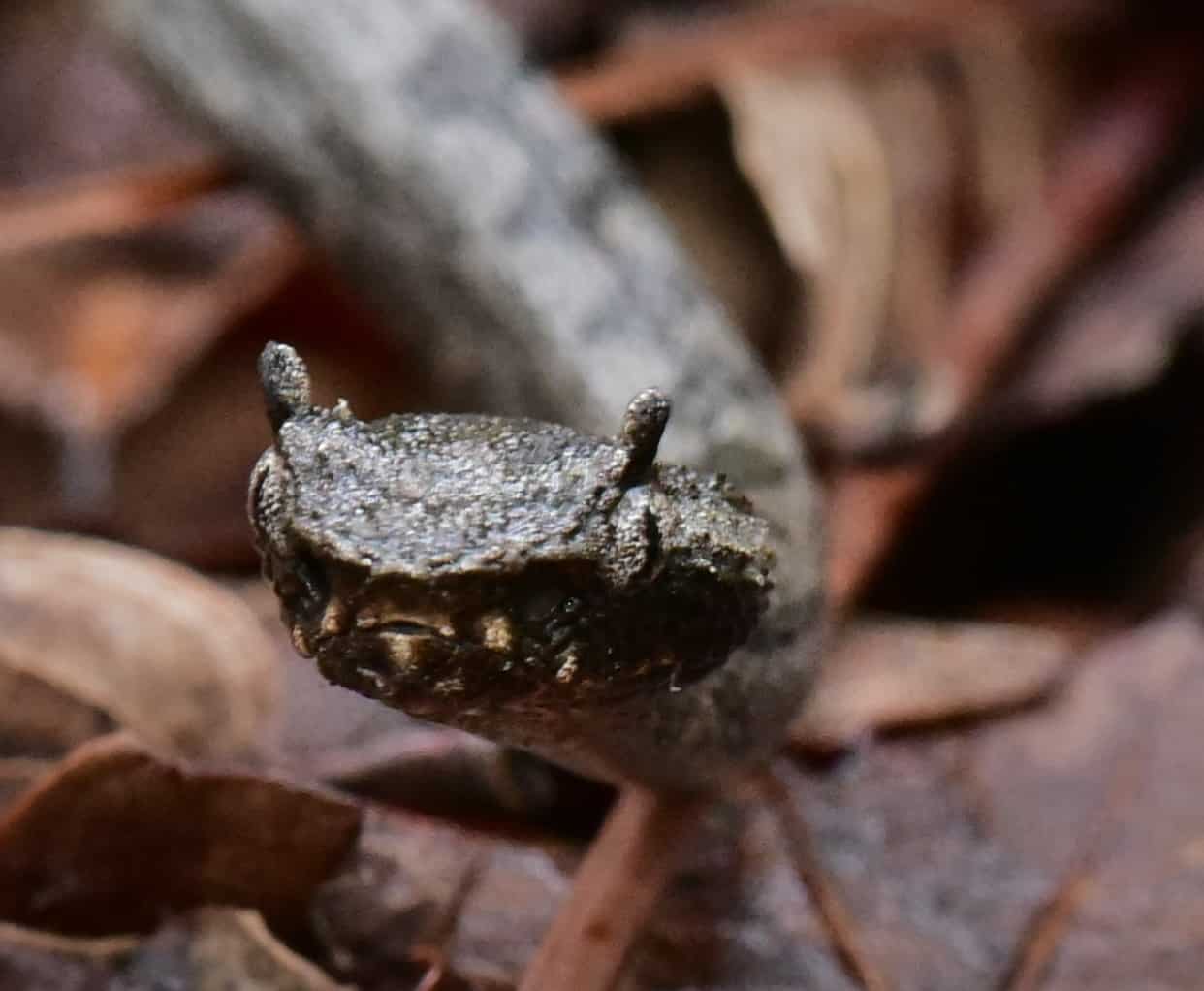
One of Earth’s handful of horned snakes, although this is probably the least impressive, the most like a cartoon character. As the image above shows, they’re more like silly ears sticking up, rather than jagged instruments of death. These horns are located directly above each eye and consist of severely enlarged scales.
Mexican horned pitvipers (Ophryacus undulatus) are found exclusively in southern Mexico, at altitudes of 1800 to 2800 metres. They inhabit forested mountain areas, where they often climb branches to 1-3 metres high, but spend equal amounts of time on the ground. You might find Ophryacus undulatus resting on a rotting log, or on the banks of a small forest stream. But you’ll never find them in Mexico City, and never in the dusty plains of the north.
Mexican horned pitvipers have little colour variation. Their horns are memorable, but otherwise, they’re a typical viperid beige-grey, with a faint zigzagging stripe down their spine. Only a few details on their venom exist. For example, they were found to have little procoagulant activity in humans, when toxins accelerate the formation of blood clots so that supplies for clotting wounds such as fibrinogen are depleted. However, their venom caused severe haemorrhaging and was highly lethal in mice, and was rich in phospholipase A2s.
Like every snake on this list, Ophryacus undulatus is found exclusively in Mexico.
| 2 | Lined Tolucan ground snake |
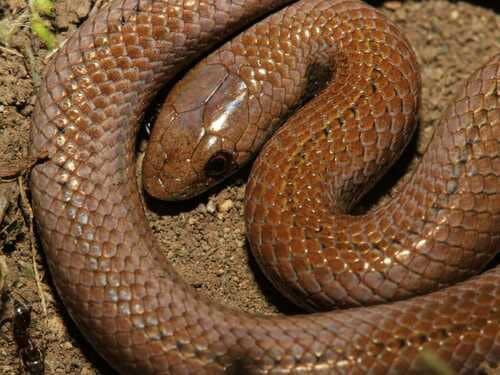
This snake doesn’t have the largest range, as they’re found only in southern Mexico, including the outskirts of Mexico City, but within that range, they’re über-common. The lined Tolucan ground snake (Conopsis lineata) inhabits altitudes of 1750 to 3100 metres.
This species averages at just 21.5cm in total length, with some pushing to 32cm. Their average body diameter was 0.67cm, and their confirmed meals are similarly small, including grasshoppers and termites. In 2010, a 24.5cm lined Tolucan ground snake was found below a rock in an oak forest and regurgitated a spider.
Conopsis lineata appears in many high altitude habitats, such as pine-oak forests, montane cloud forest, and fir forests. They also appear near human habitation, where they commonly shelter under small rocks, logs, and debris. They love cover objects, making them like a Mexican parallel to the US ring-necked snake.
Conopsis lineata can be found over the whole year, though they’re most abundant from July to September. This is a non-venomous snake which has no power or desire to harm humans, and would be shocked if the local rattlesnakes tried to talk them into it.
| 3 | Durango mountain kingsnake |
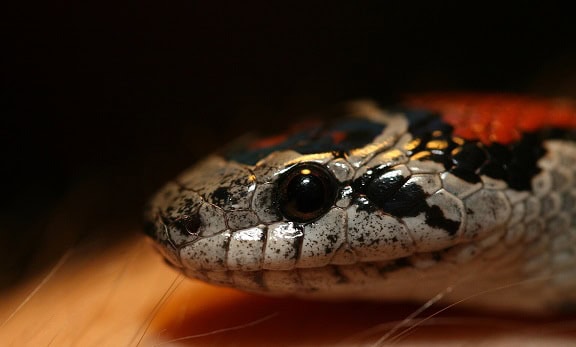
A kingsnake found only in central Mexico, in its namesake Durango mountains. Lampropeltis greeri is a non-venomous constrictor which is usually less than 90cm. Their ID signs are a silvery base overlaid with brick red blotches, each with a slight black border. Its face nearly always matches the base colour, so therefore usually silver.
Durango mountain kingsnakes are confirmed to prey on spiny lizards (Sceloporus family), and live in spacious oak forests and shrubland with an abundance of rocks, on mountain slopes at medium elevations. These areas are warm during the day, but plummet in temperature at night, leading this kingsnake to become an expert at disappearing into dark rock fissures for shelter. When they need to warm their bodies, they stretch out peacefully on large rock slabs in the sun.
This is a calm species that rarely bites, according to testimonies from captivity. The most they do is release a vile snake smell or shake their tail against substrate. Lampropeltis greeri is an easily recognisable snake, and if you see one staring at you from a rock in the Mexican wilderness, there’s no need for fear.
This species was originally a subspecies of the Mexican kingsnake (Lampropeltis mexicana), which is also endemic to Mexico. However, it was recently elevated to full species-hood along with the Nuevo León kingsnake (Lampropeltis leonis).
| 4 | Mexican bull snake |
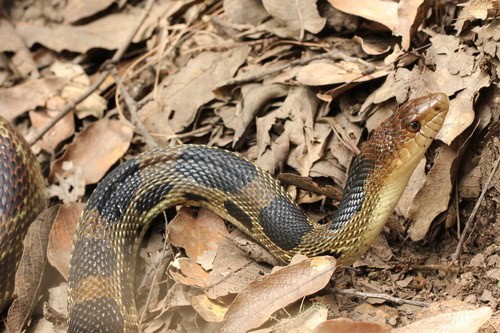
The Mexican bull snake (Pituophis deppei) is Mexico’s representative of the gopher/pine snake family. This species has round pupils and is active by day (diurnal), and inhabits a huge swathe of the country, while failing to reach either the northern or southern border.
This species is identifiable by an olive yellow base, overlaid with 27-49 dark body blotches. In some Mexican bull snakes, these dark blotches are connected with lines. This is a thickly built snake which reaches a maximum of 2.28 metres. With their bright colours, this makes them hard to miss. Pituophis deppei mainly appears in arid mesquite grassland, pine-oak forests and desert thornbush areas, but is also comfortable near human habitation in rural spots, frequently appearing on cultivated land in Mexico’s sweeping countryside.
Mexican bull snakes eat rodents (occasionally birds), and spend large portions of time sheltering from the heat in rodent burrows, as well as tree hollows. Though non-venomous, Mexican bull snakes have a nasty side, hissing loudly at interlopers and even biting painfully. Pituophis deppei almost never appears below 1000 metres, and has been found at 2800 metres in Puebla municipality, and near 3000 metres in Hidalgo state.
| 5 | Loranca’s earth snake |
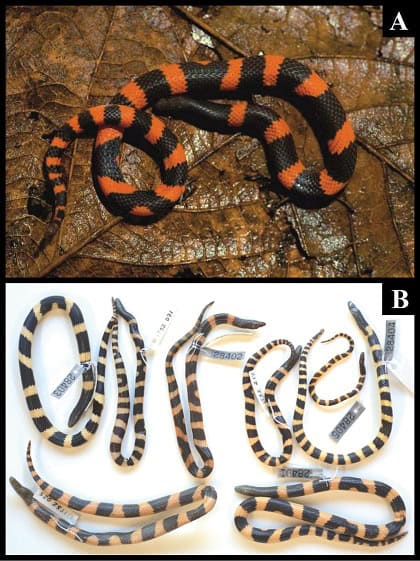
With 54 confirmed members (as of 2024), Geophis is one of the most enormous snake genera. Its members are shy and divided into small pockets within forests, making them extremely tricky to discover, but Mexico gained a new species in 2016 with the official discovery of Loranca’s earth snake (Geophis loranca). The new species was found in Veracruz and Puebla states, in biodiverse cloud forest habitats at 1210 and 1700 metres.
Though small at 30cm, this species is very distinctive. There’s only two main colours: vivid orange and black, with black covering the tail and head, and bright orange bands adorning the entire body. There are virtually no subtle colours between, just a sudden transition. Its face was simplistic with no patterns. The new snake had smooth dorsal scales across its entire body, and especially small eyes. Almost all Loranca’s earth snake individuals were found under fallen logs or within leaf litter.
Lorancai’s earth snake was closely related to Geophis duellmani and Geophis turbidus, but distinct from the former due to scale alterations around the eyes, and the latter due to its memorable bi-coloured patterns.
| 6 | Black-tailed horned pitviper |
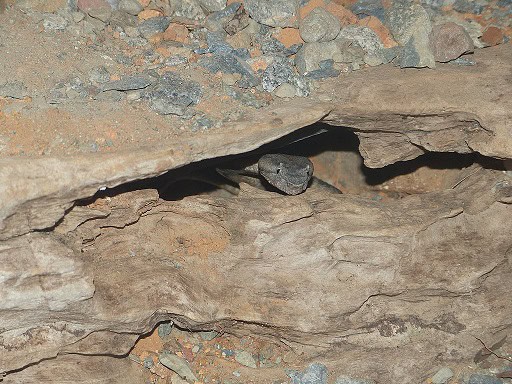
An endangered viper which is at high risk of extinction. The black-tailed horned pitviper (Mixcoatlus melanurus) once belonged to the Ophryacus family like the Mexican horned pitviper, but was switched to the Mixcoatlus family in 2011.
This species is found only in southern Puebla and central Oaxaca in southern Mexico, at altitudes of 1600-2400 metres. Its habitats include arid tropical pine-oak, and tropical arid scrub in highlands, where it has been found resting below agaves. Large swathes of its habitat have been cleared for cattle grazing and agricultural fields, leading to an official classification of “endangered” by IUCN.
This is a terrestrial species, rarely climbing trees. It’s a small snake measuring just 37-50cm. In 2020, its venom was investigated in detail for the first time. Scientists discovered a unique neurotoxin called melanurutoxin, which comprised 14.8% of the venom by weight, and accounted for 37.8% of the venom’s lethality.
Tests in mice have revealed flaccid paralysis and respiratory arrest, classic neurotoxic symptoms, which are less common in vipers than coral snakes. The study also tested two Mexican pitviper antivenoms, manufactured using rattlesnakes. There was little protection against black-tailed horned pitviper venom.
| 7 | Mexican west coast boa constrictor |
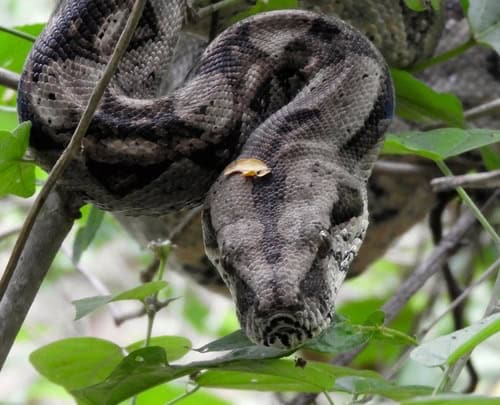
A large boa species found exclusively in Mexico, which is closely related to the boa constrictor. This large squeezing machine is found at up to 1400 metres, and mainly inhabits tropical dry forests.
Originally, boa constrictors were a monolithic empire stretching from northern Mexico through to Argentina. Then the Central American colonies and further north were divided into Boa imperator, a new species. Then those territories were divided further, with most Mexican populations switched to Boa sigma. Despite a similar appearance, the genetic differences were huge: Boa sigma diverged from the central American Boa imperator at least 5.2 million years ago, and possibly up to 14 MYA.
Boa sigma is abundant on the west coast of Mexico, and missing from the east. The northernmost record of Boa sigma lies 74km south of the Arizona border, in the municipality of Bacanuchi in Sonora.
Boa sigma is a decent tree climber, and is capable of grabbing Collie’s squirrels 7 metres above ground. This boa took 17 minutes to hunt and swallow its prey, before descending and taking shelter in a burrow among some rocks. Boa sigma is feared by local birds, such as rufous-winged sparrows and cactus wrens, which use the strategy of collective mobbing if they spot one.
| 8 | Chiapas burrowing snake |
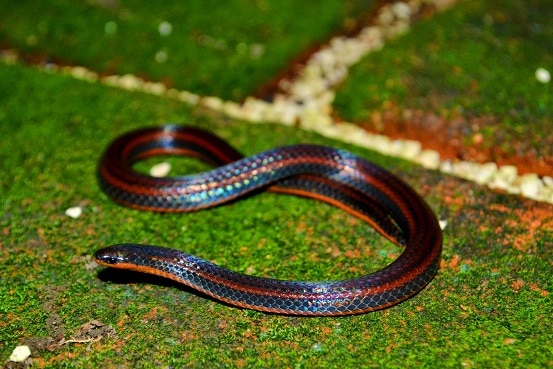
This poorly researched snake lives exclusively in the southern Mexican state of Chiapas. Adelphicos nigrilatum averages at 30cm, with a maximum length of 45cm. It has very small eyes with round pupils, a head which is barely separate from the neck, and smooth scales to touch. It’s unlikely that you’ll ever get the chance, as this is a creature of thick pine forests, where it lurks under logs, cowering in the knowledge that its lack of venom and small size make it defenceless.
Other Adelphicos members (there’s 9 in total) prey on earthworms and soft-bodied invertebrates, so Adelphicos nigrilatum is likely similar. Chiapas burrowing snakes are tricky to find, but easy to recognise when up close, due to a mixture of red and black, with a glistening shine to their scales.
There’s some variety in patterns – some have a clear black base with vivid thin red stripes, while the red and black intermingle in others. There’s even a rare yellow-bellied variant. This species has a slight iridescent sheen.
| 9 | Baird’s patchnose snake |
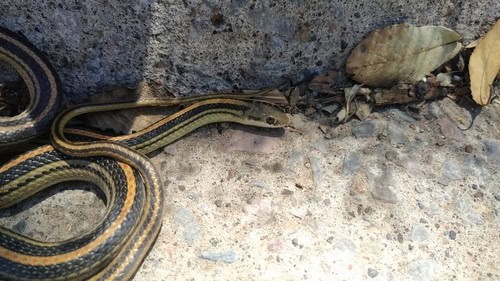
A relative of the US patchnose snake (Salvadora hexalepis). Baird’s patchnose snake (Salvadora bairdi) lives exclusively in Mexico, and is recognisable by its numerous parallel stripes in beige and brown.
This species seems to like slightly moister areas than its desert-faring Arizona cousin. It has been discovered in shrubland and forests at altitudes of up to 3200 metres, as well as near agricultural areas and drier mesquite grasslands. Baird’s patchnose snakes reach an all-time record of 137cm, which was discovered on a dirt road by a corn field in 2022 in Atlacomulco municipality, and demolished the previous record by 24cm.
US patchnose snakes eat lizards and lizard eggs, with a strangely shaped nose (rostral scale) for digging up buried stashes. However, this signature nose is much less developed in Salvadora bairdi, as the rostral scale lacks any free edges, probably because they shun deserts.
Salvadora bairdi preys partly on mammals, as shown by a 2014 report. A Baird’s patchnose snake was found in grassland intermingled with patches of oak forest and tropical scrub forests, resting below a rock. The scientists gently massaged its stomach, triggering it to regurgitate a northern pygmy mouse (Baiomys taylori).
| 10 | Pine-oak snake |
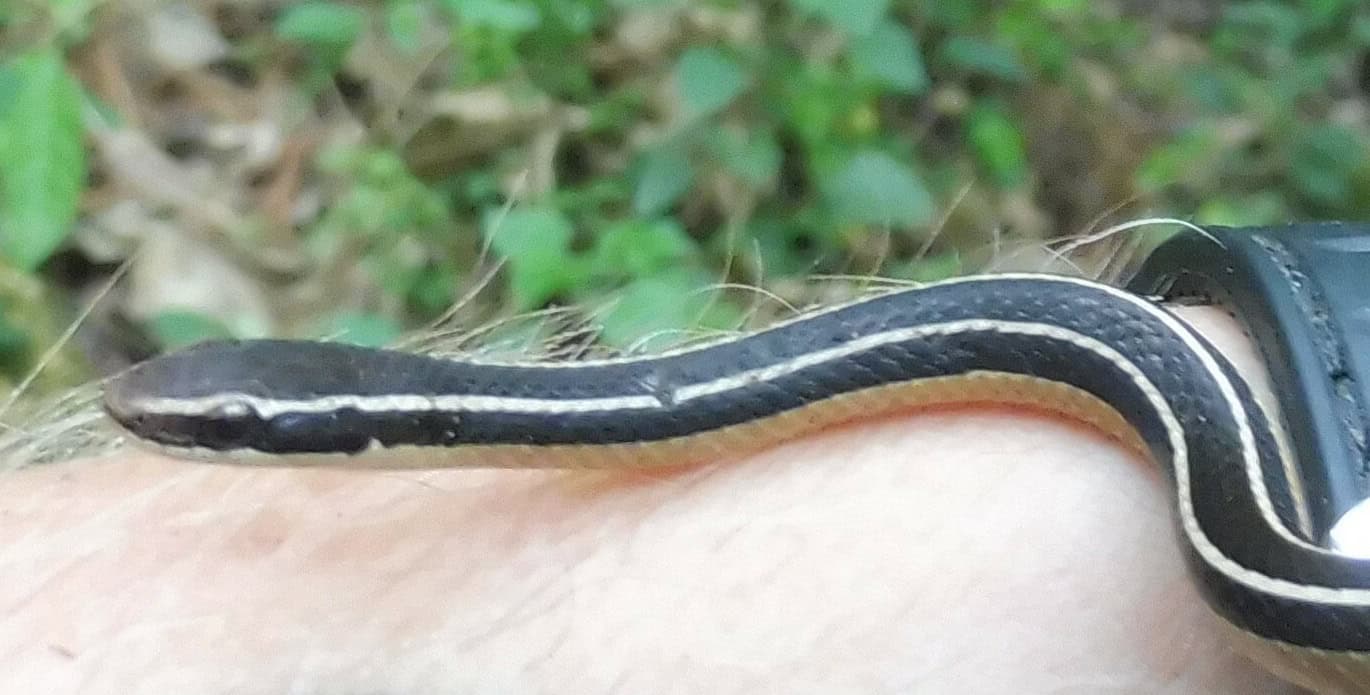
This species inhabits southern and western Mexico, ranging from Oaxaca to Nayarit state. Its range isn’t huge, but within the borders of that empire, pine-oak snakes (Rhadinaea taeniata) are common. Like other snakes near here, they reach high altitudes, with a maximum so far of 2835 metres. This snake peaks at 88cm.
Pine-oak snakes are found in pine-oak forest (which isn’t surprising), where they’re found crawling through piles of fallen pine needles. They move by day, with no worries about travelling during rainfall. They can also be found on dirt roads within pine forests – this is the average Joe’s best chance to find one.
Pine-oak snakes closely resemble garter snakes, with a black base overlaid with thin beige stripes running parallel down their body. The Rhadinaea genus has 21 members worldwide. The majority are found in Mexico, but the pine woods snake (Rhadinaea flavilata) lives in Florida, separated from other species by thousands of miles. Pine-oak snakes are easily recognisable as they have some of the most distinct stripes. In the nearby Rhadinaea eduardoi, these stripes are indistinct and blend together.
